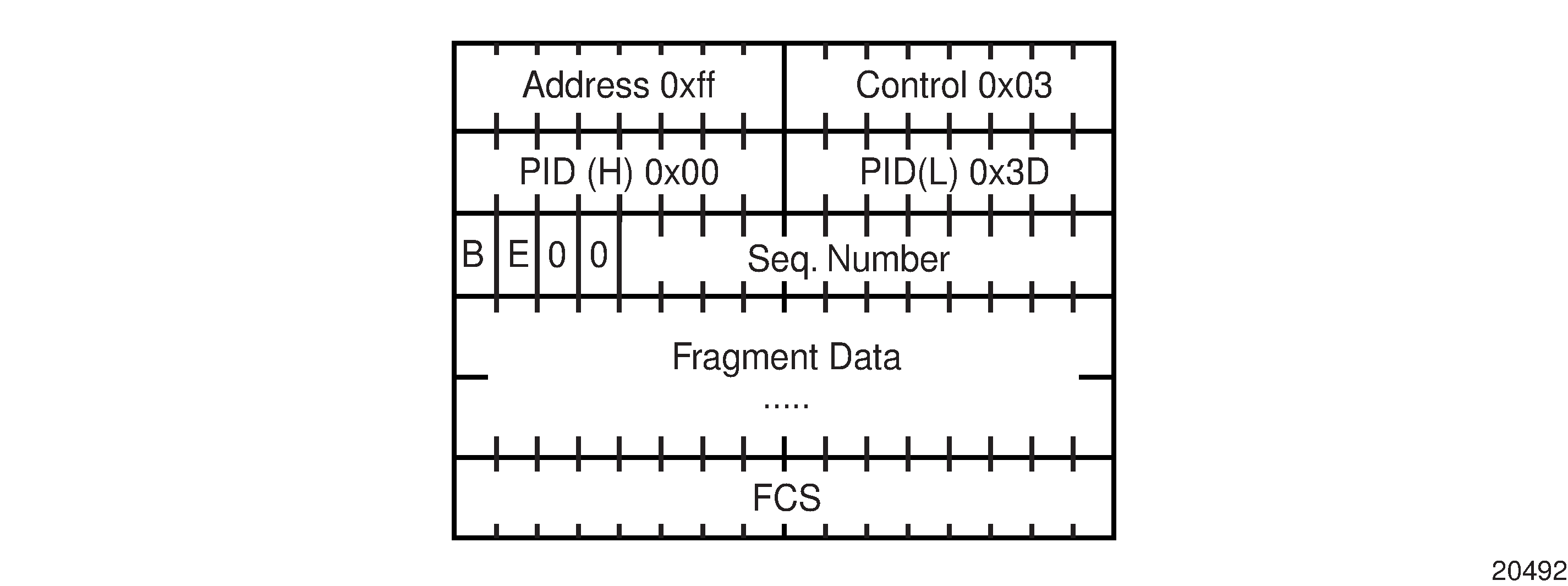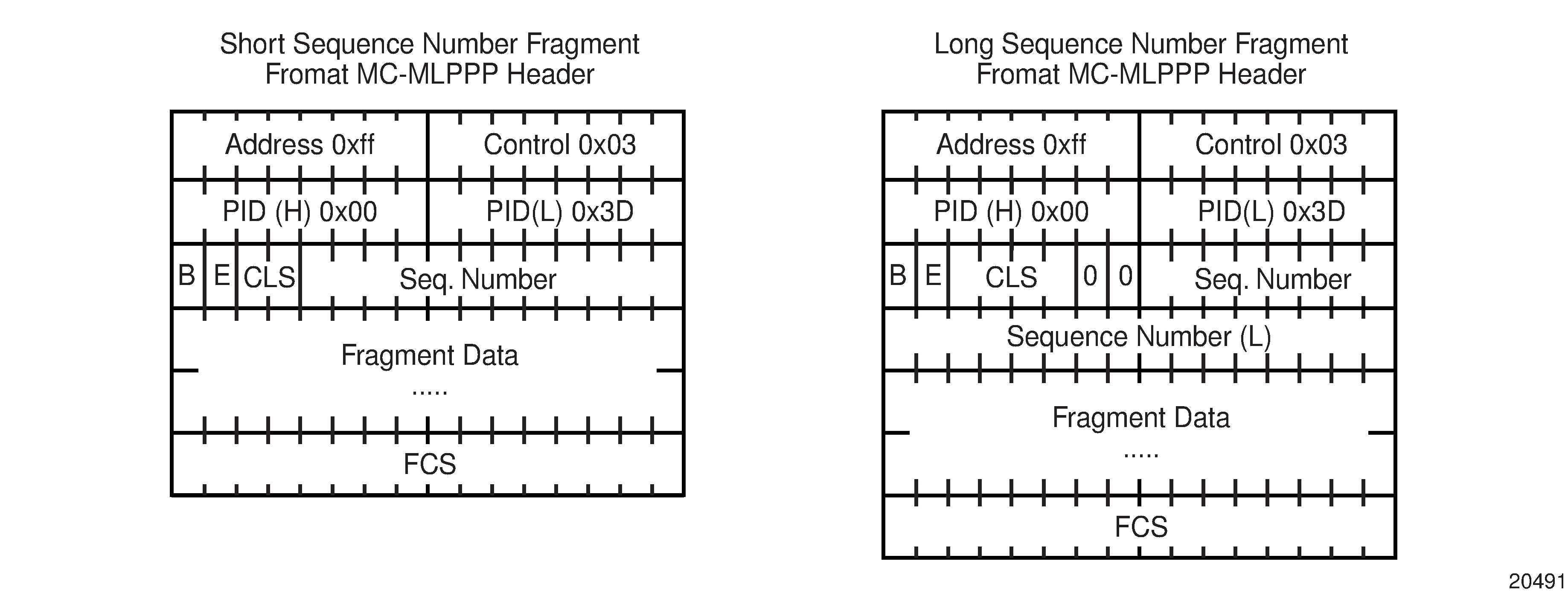The 7705 SAR supports multi-class MLPPP (MC-MLPPP) to address end-to-end delay caused by low-speed links transporting a mix of small and large packets. With MC-MLPPP, large, low-priority packets are fragmented to allow opportunities to send high-priority packets. QoS for MC-MLPPP is described in QoS in MC-MLPPP.
MC-MLPPP allows for the prioritization of multiple types of traffic flowing over MLPPP links, such as traffic between the cell site routers and the mobile operator’s aggregation routers. MC-MLPPP, as defined in RFC 2686, The Multi-Class Extension to Multi-Link PPP, is an extension of the MLPPP standard. MC-MLPPP is supported on access ports wherever PPP/MLPPP is supported, except on the 2-port OC3/STM1 Channelized Adapter card. It allows multiple classes of fragments to be transmitted over an MLPPP bundle, with each class representing a different priority level mapped to a forwarding class. The highest-priority traffic is transmitted over the MLPPP bundle with minimal delay regardless of the order in which packets are received.
Figure: Original MLPPP Header Format shows the original MLPPP header format that allowed only two implied classes. The two classes were created by transmitting two interleaving flows of packets; one with MLPPP headers and one without. This resulted in two levels of priority sent over the physical link, even without the implementation of multi-class support.
Figure: MC-MLPPP Header Format shows the short and long sequence number fragment format MC-MLPPP headers. The short sequence number fragment format header includes two class bits to allow for up to four classes of service. Four class bits are available in the long sequence number fragment format header, but a maximum of four classes are still supported. This extension to the MLPPP header format is detailed in RFC 2686.


The new MC-MLPPP header format uses the previously unused bits before the sequence number as the class identifier to allow four distinct classes of service to be identified.